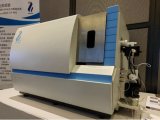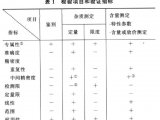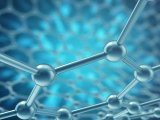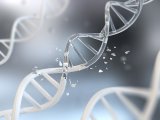Prepare a stock solution of YFP1 at 20 µg/ml in NaHCO3 (0.1 M, pH 9.6) or in PBS. Add 50 µl to the wells of a 96-well microtiter plate and incubate for 2 hours at room temperature or overnight at 4°C.
Wash the wells three times in PBS/Tween (0.05%).
Fill the wells (200 µl) with PBS/BSA (1%) and incubate at room temperature for 1 hour.
Wash twice in PBS/Tween (0.05%).
In a separate 96-well plate, prepare a titration series of the biotin-labeled ZO-1 and the unlabeled ZO-1, XH1, XH2, and control PC10 antibodies over five 10-fold dilutions using PBS/BSA (1%) as a diluent. The starting concentration of the antibody solutions should be about 10 µg/ml. Hybridoma supernatants can be used neat.
Transfer 50 µl of each dilution onto the antigen-coated plate and incubate for 2 hours at room temperature.
Wash the plate four times in PBS/Tween (0.05%).
Add 50 µl of rabbit anti-mouse peroxidase conjugate (diluted 1 in 5000 in PBS/BSA [1%]) to all of the wells containing unlabeled antibody. Add the streptavidin-peroxidase conjugate (diluted 1 in 5000 in PBS/BSA [1%]) to the wells that contain the biotinylated ZO-1 antibody.
Incubate for 2 hours at room temperature or overnight at 4°C, and then wash the plate four times in PBS/Tween (0.05%).
Add 50 µl of freshly prepared TMB substrate to each test well and incubate at room temperature for 5-15 minutes as the blue color develops in the wells containing the highest concentration of specific antibody.
After development of the blue color, stop the reaction by adding 50 µl of 100 mM H2SO4. Determine the absorbance of the now-yellow product read at 450-nm wavelength in a microplate reader. The positive antibodies should give a strong, clear signal that diminishes through the latter part of the dilution series. This establishes that the specific unlabeled antibodies are able to bind to the target antigen, identifies those having very weak activity, and establishes a suitable concentration of labeled antibody to use in the competition assay.
The Competition Assay
Prepare antigen-coated plates as in Steps 1-4 above. The assay can be configured in a large number of different formats using either labeled antigen or labeled antibody. The key requirements remain the same, however-a demonstration that all of the antibodies are able to bind the test antigen in the assay and the labeling of one of the antibodies that allows it to be distinguished from the competitor antibody. Commonly, the antigen is immobilized on a 96-well plate. Some antigens are partially denatured on absorption to plastic, and in these cases, alternate means of immobilizing the antigen may be explored.
Incubate the wells with the dilution series of unlabeled antibodies as above for 2 hours at room temperature.
Without washing the wells, add 50 µl of the dilution of the biotin-labeled ZO-1 antibody that gave the strongest signal before the next point in the titration curve showing a strongly reduced signal, as determined in the previous procedure.
Wash the plate four times in PBS/Tween (0.05%).
Add streptavidin-peroxidase conjugate (diluted 1 in 5000 in PBS/BSA (1%)) to all of the wells.
Incubate for 2 hours at room temperature or overnight at 4°C, and then wash the plate four times in PBS/Tween (0.05%).
Add 50 µl of freshly prepared TMB substrate to each test well and incubate at room temperature for 5-15 minutes. The blue color develops in the wells containing the highest concentration of specific antibody.
After development of the blue color, stop the reaction by adding 50 µl of H2SO4 (100 mM). Determine the absorbance of the now-yellow product read at 450-nm wavelength in a microplate reader.
A strong reduction in the signal of the binding of the labeled ZO-1 should be seen by the highest concentrations of the unlabeled ZO-1 (homotypic competition). The control PC10 antibody should not inhibit the signal at any concentration. Results for the newly derived XH1 and XH2 antibodies should be interpreted carefully. If, for example, the novel competing antibody XH2 reduces the signal, whereas the other new antibody XH1 does not, then it may be concluded that XH2 and ZO-1 recognize sterically competitive epitopes, whereas the XH1 epitope is clearly unique.













